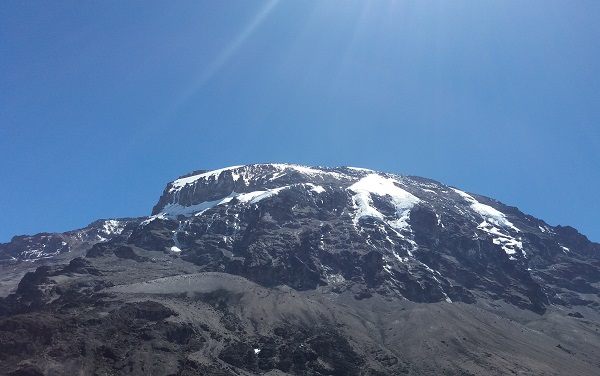
Kilimanjaro is Africa’s tallest peak, and also the world’s tallest free standing mountain. The summit, named Uhuru Point, is 5,895 meters (19,341 feet) above sea level.
Most high mountains are part of ranges, such as Mount Everest’s Himalayan Mountain Range. These are formed in a process called plate tectonics. Below the ground, Earth’s crust is made up of multiple tectonic plates. These plates have been moving since the beginning of time due to geologic activity.
When plates push against each other, the edges crumple, forcing slabs of rock into the air. These are known as fold mountains and are the most common type of mountain. A fault-block mountain range is caused when a fault (crack) in the Earth’s crust pushes blocks of rock up between two tectonic plates. The uplifted blocks become block mountains.
Free standing mountains like Kilimanjaro are usually a result of volcanic activity. Volcanic mountains are formed when molten rock erupts, and piles upon the surface.
Here is a list of gear that you’ll need for your trek. All communal equipment such as tents, tables,
chairs and cooking gears is provided by the climb team from Tanzania Joy Tours All personal equipment
is usually provided by the climbers although we have a fully stocked store of equipment available for
hire. Total luggage should be kept to a maximum of 20kg on the mountain. Extra luggage can be safely
stored at your Hotel. If you need to take more luggage then you must let us know at the time of booking
so that we can arrange additional porters. Equipment you will need:
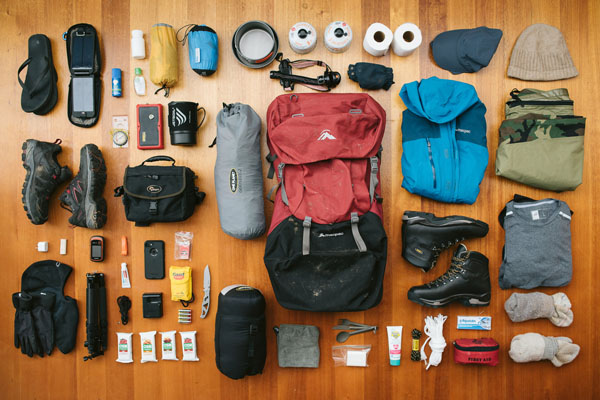
Choosing A Qualified Tour Operator
Experienced Kilimanjaro guides
Choose The right equipment for Kilimanjaro safety
Altitude sickness
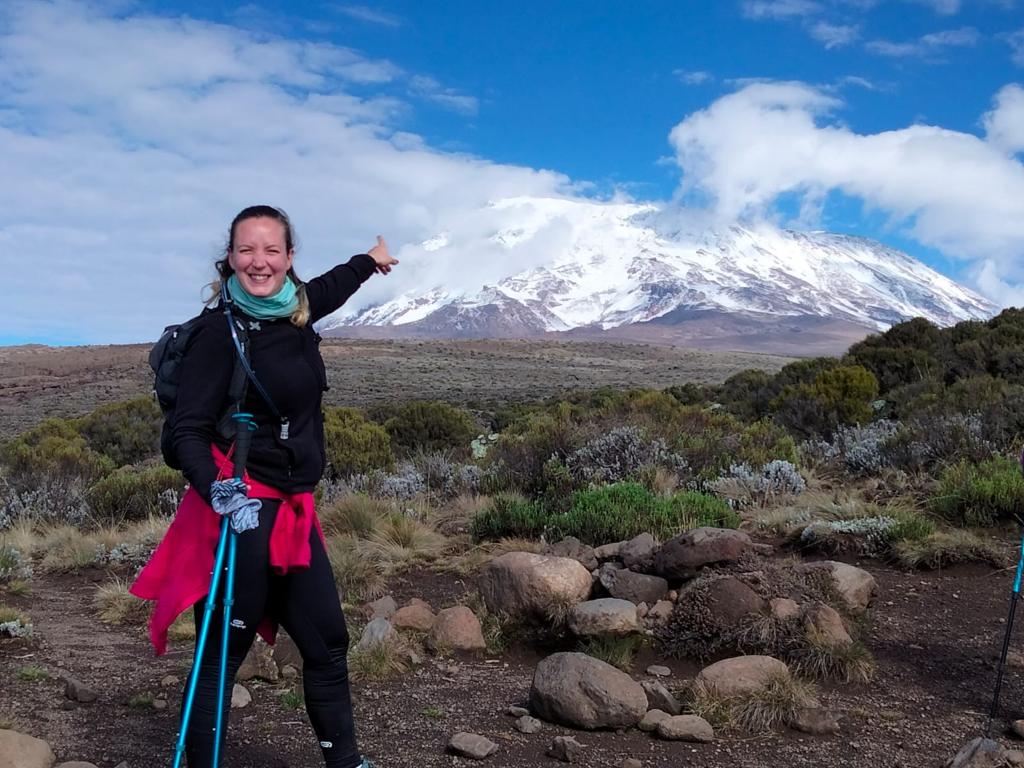
The main trekking seasons on Kilimanjaro correspond with the mountain’s two dry seasons (an imprecise term, the weather being occasionally inclement during these periods too) namely January to mid-March and June to October. Of course you can trek up Kilimanjaro in the rainy season but not only is there a much higher chance of trekking in the rain, the summits of Kibo and Mawenzi are likely to be wreathed in thick cloud too. Indeed, several agencies even suspend their operations in November and December, deciding that any trek up Kilimanjaro is foolhardy at this time and the rewards for the trekkers considerably less. Curiously, however, Christmas and New Year, when the weather is far from perfect, are actually the most popular times for climbing Kilimanjaro.
As to the relative merits of the two trekking seasons, the differences are small though significant. The January to March season tends to be (slightly) colder and there is a much greater chance of snow on the path at this time. The days, however, are often clearer, with only the occasional brief shower. It is usually an exceptionally beautiful time to climb and is often a little quieter than the other peak season of June to October, which coincides with the main academic holidays in Europe and the West. In this latter season the clouds tend to hang around the tree-line following the heavy rains of March to May. Once above this altitude, however, the skies are blue and brilliant and the chance of precipitation minimal (though still present).
Although the June to October season tends to be busier, this is not necessarily a disadvantage. For example, if you are travelling independently to Tanzania but wish, for the sake of companionship or simply to cut down on costs, to join up with other travellers for your Kilimanjaro trek, then the high visitor numbers in the June-October peak season will give you the best chance of doing this.
While if you do crave solitude when you walk, it can still be found on the mountain during this peak season. The trails are long, so you can always find vast gaps between trekkers to allow you to walk in peace; some of the routes – Rongai, for example, or the two trails across the Shira Plateau – almost never have more than one or two trekking groups on them at any one time, and are often completely deserted.
And besides, Kilimanjaro is just so huge that its presence will dwarf your fellow trekkers to the point where they become, if you wish them to be, quite unnoticeable.
Though climbing Mount Kilimanjaro does not require special mountaineering skills, the experience
will be more enjoyable and memorable if you are in good physical shape. This is not to say that
you must be an athlete- if you can comfortably walk up to 15 km per day, you may consider yourself
physically prepared for a Kilimanjaro adventure.
At the same time, there are some basic
exercises that can maximize your fitness level for the Kilimanjaro hike.
The purpose of cardio training is to stimulate and optimise your body’s oxygen consumption. Being able to trek without being unduly short of breath despite high altitude goes a long way towards making the climb more enjoyable.
Good examples of cardio training include jogging (or running on a treadmill), swimming, martial arts, and cycling. They train your circulatory system, making it better prepared for using limited amounts of oxygen efficiently.
If you haven’t practiced any aerobic activity for a while, our advice is to start training 2-4 months before the start of your Kilimanjaro adventure. If, however, you are training rather regularly, you should just keep the regime.
At the same time, we recommend giving yourself a break from exercise for a couple of weeks before the climb.
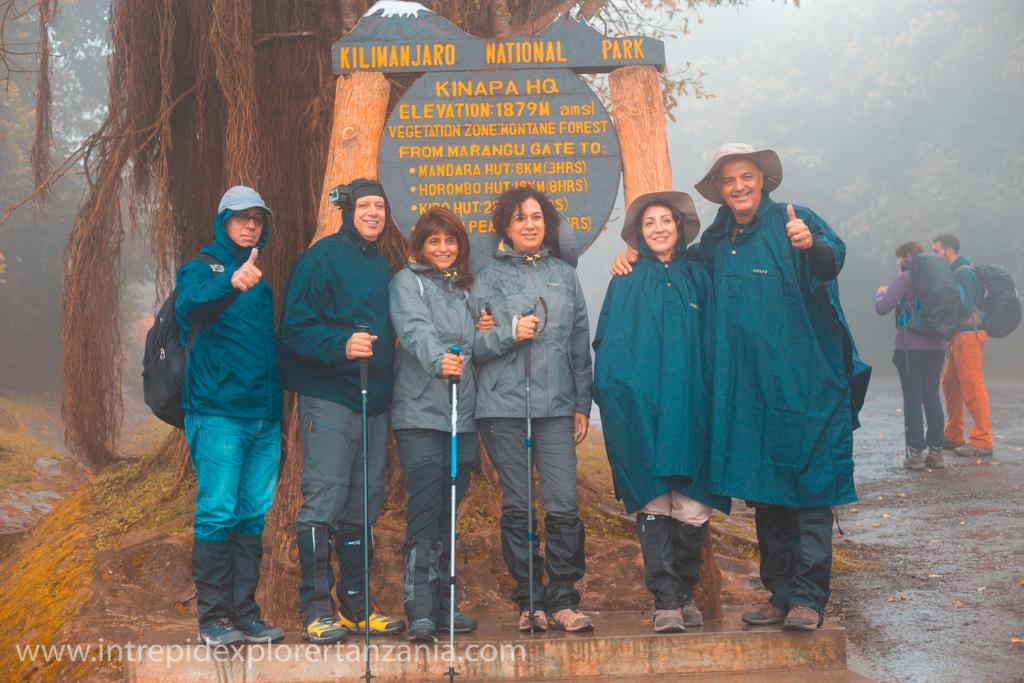
Featuring captivating scenic vistas, pristine wildlife, excellent acclimatization opportunities and low Read more
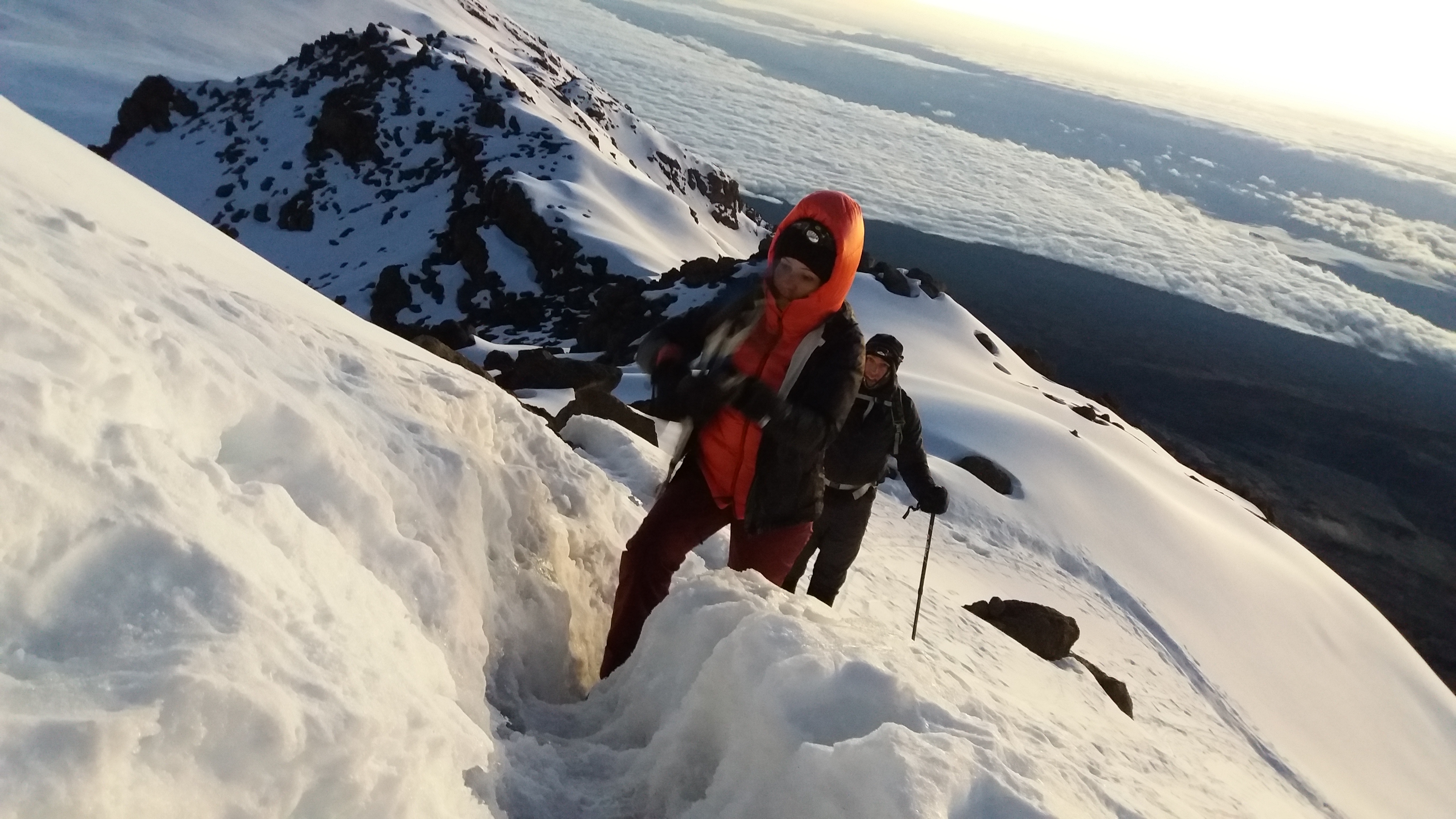
Featuring captivating scenic vistas, pristine wildlife, excellent acclimatization opportunities and low Read more

Featuring captivating scenic vistas, pristine wildlife, excellent acclimatization opportunities and low Read more
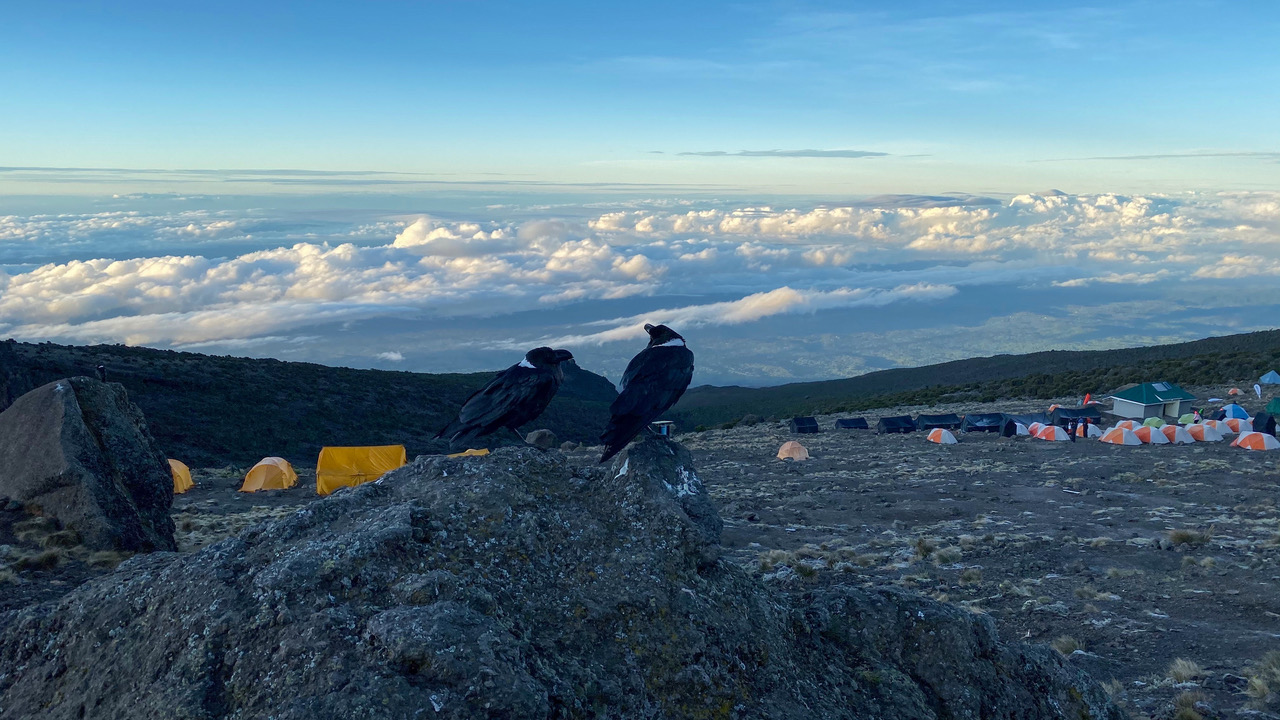
Featuring captivating scenic vistas, pristine wildlife, excellent acclimatization opportunities and low Read more
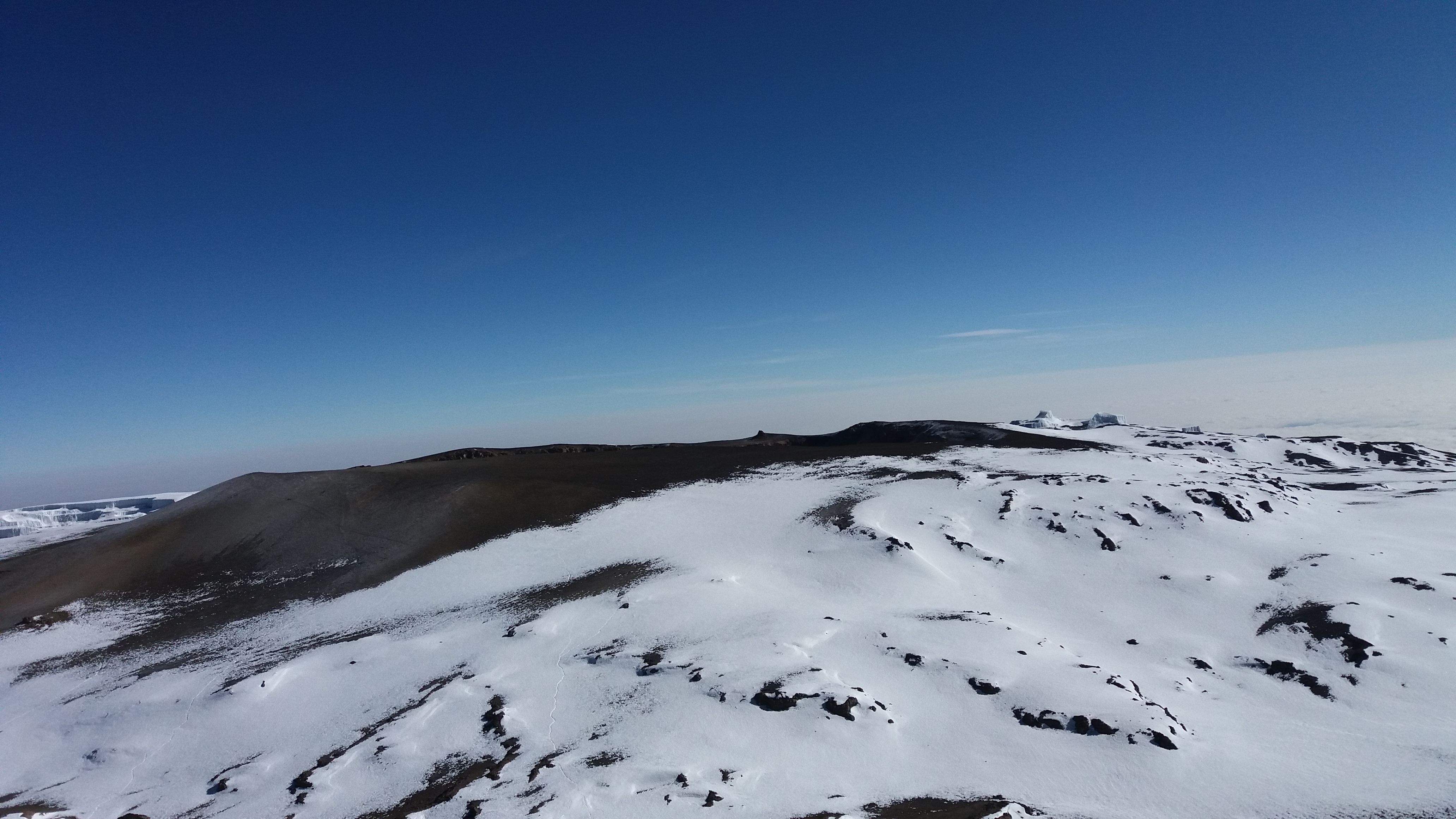
Featuring captivating scenic vistas, pristine wildlife, excellent acclimatization opportunities and low Read more
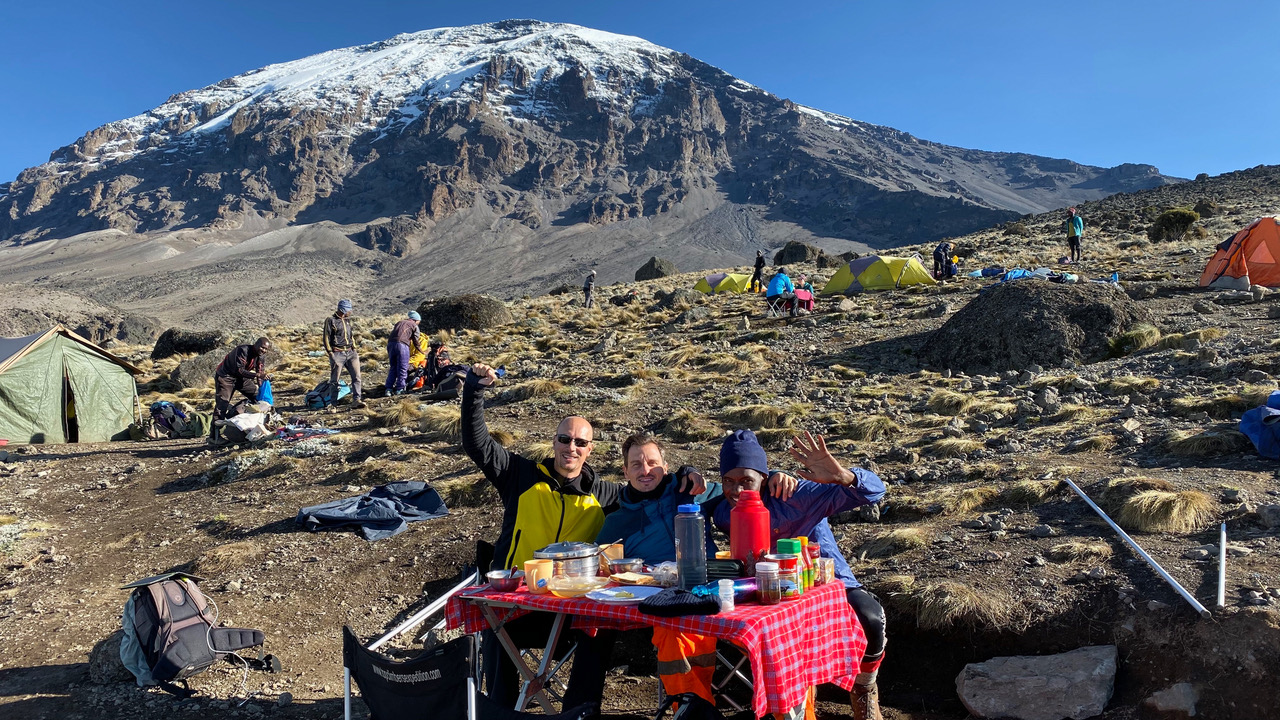
Featuring captivating scenic vistas, pristine wildlife, excellent acclimatization opportunities and low Read more
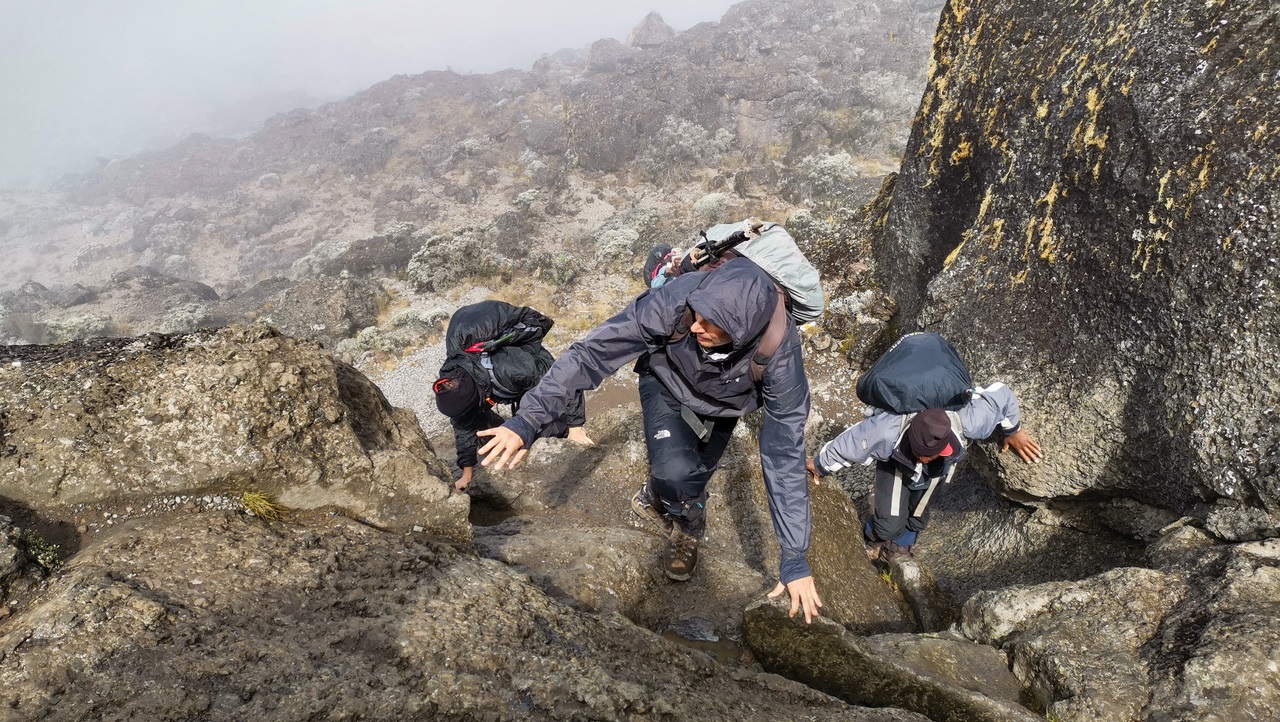
Featuring captivating scenic vistas, pristine wildlife, excellent acclimatization opportunities and low Read more
| Month | Low (F) | Average (F) | High (F) | Humidity (%) | Rain Fall (in) |
|---|---|---|---|---|---|
| January | 64 | 78 | 92 | 58 | 1.4 |
| February | 64 | 78 | 92 | 57 | 2.0 |
| March | 66 | 78 | 90 | 63 | 4.7 |
| April | 67 | 76 | 85 | 73 | 13.8 |
| May | 65 | 72 | 79 | 77 | 9.3 |
| June | 62 | 70 | 78 | 69 | 1.0 |
| July | 60 | 69 | 78 | 69 | 1.0 |
| August | 60 | 60 | 80 | 69 | 0.7 |
| September | 60 | 71 | 83 | 61 | 0.6 |
| October | 62 | 75 | 88 | 57 | 1.0 |
| November | 64 | 76 | 86 | 57 | 2.5 |
| December | 64 | 77 | 90 | 60 | 2.1 |
There are many different factors affect the climbing prices. A Kilimanjaro climb for standard cost
range from $1,400 to 2400.In fact, to understand how the climbing Mt. Kilimanjaro cost is formed many
different factors should be taken into consideration. Among of these factors are:-
1.Kilimanjaro National Park Fees
2.Kilimanjaro Climbing Crew Wages
3.Supplies and Logistics
4.Camping Equipment Costs
5.Taxes and Licenses
6.Climbing Comfort
7.Safety
8.Accommodation Before and After a Kilimanjaro Climb
The percentage of oxygen in the atmosphere at sea level is about 21%. As altitude increases, the
percentage remains the same but the number of oxygen molecules per breath is reduced. At 12,000
feet (3,600 m) there are roughly 40% fewer oxygen molecules per breath so the body must adjust to
having less oxygen. Altitude sickness, known as AMS, is caused by the failure of the body to adapt
quickly enough to the reduced oxygen at increased altitudes. Altitude sickness can occur in some
people as low as 8,000 feet, but serious symptoms do not usually occur until over 12,000 feet.
Mountain medicine recognizes three altitude categories:
High altitude: 4,900 to 11,500 ft (1,500 to 3,500 m)
Very high altitude: 11,500 to 18,000 ft (3,500 to 5,500 m)
Extreme altitude: 18,000 ft and above (5,500 m and above)
In the first category, high altitude, AMS and decreased performance is common. In the second category, very
high altitude, AMS and decreased performance are expected. And in extreme altitude, humans can function only
for short periods of time, with acclimatization. Mount Kilimanjaro's summit stands at 19,340 feet - in extreme
altitude.
At over 10,000 feet (3,000 m), more than 75% of climbers will experience at least some form of mild AMS.
There are four factors related to AMS:
High Altitude
Fast Rate of Ascent
High Degree of Extertion
Dehydration
The main cause of altitude sickness is going too high (altitude) too quickly (rate of ascent). Given enough time,
your body will adapt to the decrease in oxygen at a specific altitude. This process is known as acclimatization
and generally takes one to three days at any given altitude. Several changes take place in the body which enable
it to cope with decreased oxygen:
• The depth of respiration increases
•The body produces more red blood cells to carry oxygen
•Pressure in pulmonary capillaries is increased, "forcing" blood into parts of the lung which are not normally used when breathing at sea level
•The body produces more of a particular enzyme that causes the release of oxygen from hemoglobin to the body tissues
Again, AMS is very common at high altitude. It is difficult to determine who may be affected by altitude
sickness since there are no specific factors such as age, sex, or physical condition that correlate with
susceptibility. Many people will experience mild AMS during the acclimatization process. The symptoms
usually start 12 to 24 hours after arrival at altitude and will normally disappear within 48 hours.
The symptoms of Mild AMS include:
•Headache
•Nausea & Dizziness
•Loss of appetite
•Fatigue
•Shortness of breath
•Disturbed sleep
•General feeling of malaise
Symptoms tend to be worse at night and when respiratory drive is decreased. Mild AMS does not interfere with
normal activity and symptoms generally subside as the body acclimatizes. As long as symptoms are mild, and
only a nuisance, ascent can continue at a moderate rate.
While hiking, it is essential that you communicate any symptoms of illness immediately to others on
your trip.
The signs and symptoms of Moderate AMS include:
•Severe headache that is not relieved by medication
•Nausea and vomiting, increasing weakness and fatigue
•Shortness of breath
•Decreased coordination (ataxia)
Normal activity is difficult, although the person may still be able to walk on their own. At this stage, only
advanced medications or descent can reverse the problem. It is important to get the person to descend before the
ataxia reaches the point where they cannot walk on their own (which would necessitate a stretcher evacuation).
Descending only 1,000 feet (300 m) will result in some improvement, and 24 hours at the lower altitude will
result in a significant improvement.
Continuing on to higher altitude while experiencing moderate AMS can lead to death.
Severe AMS results in an increase in the severity of the aforementioned symptoms including:
•Shortness of breath at rest
•Inability to walk
•Decreasing mental status
•Fluid build-up in the lungs
Severe AMS requires immediate descent of around 2,000 feet (600 m) to a lower altitude. There are two serious
conditions associated with severe altitude sickness; High Altitude Cerebral Edema (HACE) and High Altitude Pulmonary
Edema (HAPE). Both of these happen less frequently, especially to those who are properly acclimatized. But, when they
do occur, it is usually in people going too high too fast or going very high and staying there. In both cases the lack
of oxygen results in leakage of fluid through the capillary walls into either the lungs or the brain.